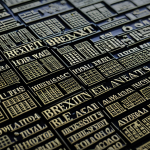The Historical Influence of UK Women’s Fashion on Global Trends
The UK women’s fashion history has long shaped international style trends, with pivotal moments echoing worldwide. The Swinging Sixties, for instance, revolutionized global wardrobes with its bold colors, mini skirts, and youthful energy. This era established London as a trendsetting capital, influencing designers and consumers far beyond Britain’s shores. Similarly, the Punk movement of the late 1970s challenged fashion norms through rebellious, DIY aesthetics, inspiring worldwide subcultures and avant-garde designers.
Early British designers like Mary Quant, credited with popularizing the mini skirt, and Vivienne Westwood, a punk fashion pioneer, played essential roles in building the British fashion legacy. Their innovations were not limited to styles but extended to the fashion industry’s structure, promoting youth culture and self-expression.
Topic to read : How Does Sustainable Fashion Impact Women’s Wardrobe Choices in the UK?
Major British fashion events, such as the rise of Savile Row tailoring for women, also contributed to the global impact by blending tradition with modernity. These historic periods illustrate how the UK’s evolving fashion scene continuously intersects with and propels international style trends, establishing the UK’s influential place in fashion history.
Contemporary UK Fashion’s Reach and Innovation
Contemporary UK fashion continues to push boundaries, driven by modern British designers who blend tradition with innovation. Figures like Stella McCartney and Simone Rocha exemplify the evolution of UK women’s fashion, incorporating sustainability and avant-garde aesthetics. Their work not only influences domestic consumers but also sets trends globally.
Additional reading : How Can UK Women Create Timeless Wardrobe Staples?
Recent decades have seen the UK as a crucible for global fashion impact, introducing styles such as gender-fluid tailoring and streetwear chic that resonate worldwide. The rise of British sneaker culture and the reimagined use of tartan patterns showcase the UK’s knack for reinvention while respecting its heritage.
Digital transformation plays a crucial role in amplifying contemporary UK fashion. Online platforms and social media allow designers and brands to reach international audiences instantly, facilitating quick adoption of new styles. Virtual fashion shows and digital collaborations create fresh opportunities for British labels to assert their influence on global runways.
British fashion’s cultural richness fosters creativity, enabling a diverse design scene that appeals globally. The interplay of heritage and innovation in modern British designers’ work ensures the UK remains a central force in shaping today’s fashion landscape.
How UK Women’s Fashion Sets Trends Internationally
UK women’s fashion trends often become global through diverse pathways, blending creativity and cultural influence. One primary channel is the impact of British style influence seen in media exposure. UK designers gain international attention via fashion weeks, editorial features, and celebrity endorsements. This visibility accelerates global fashion adoption by consumers and designers worldwide.
Several iconic trends highlight the UK’s imprint on international style. The mini skirt from the Swinging Sixties, punk-inspired leather jackets, and modern-day gender-fluid tailoring all began in the UK before becoming worldwide staples. Each trend represents a fusion of rebelliousness and innovation characteristic of the UK’s fashion identity.
Additionally, media platforms and influencer culture amplify UK fashion trends. Influential celebrities and social media personalities showcase British styles, making them desirable globally. This dynamic creates a feedback loop where trends spread rapidly beyond borders, reinforcing the UK’s role in shaping international style.
In summary, through strategic media presence, notable trend innovations, and the mobilization of influential voices, UK women’s fashion consistently drives global style movements, demonstrating enduring British style influence.
Cultural and Social Factors Supporting UK Fashion Leadership
The UK fashion industry thrives on the dynamic interplay between British culture and style and deep-rooted multicultural influences. The UK’s rich diversity fuels creative innovation, allowing designers to draw from a broad spectrum of cultural perspectives. This multicultural environment is essential in shaping unique, cutting-edge fashion that resonates on a global scale.
London Fashion Week serves as a central pillar supporting the UK’s leadership by providing an international platform for both established and emerging talent. Its role in spotlighting diverse designers from various backgrounds reinforces the industry’s inclusivity and innovation. This supportive infrastructure nurtures creativity and ensures sustained UK fashion leadership.
British cultural attitudes emphasize openness to experimental designs and social progressiveness, which fosters continual evolution of style. The fusion of traditional craftsmanship and contemporary ideas is a hallmark of British culture and style. Designers embrace this environment to challenge norms and push boundaries, maintaining the UK’s position as a global trendsetter.
In sum, the UK’s fashion dominance is strongly shaped by its multicultural society, robust industry infrastructure, and cultural openness, collectively endorsing innovation and diversity as drivers of success.
The Globalisation of British Fashion Brands and Designers
British fashion brands have achieved remarkable growth by expanding their presence across international markets. Their success often stems from blending the British fashion legacy with global consumer preferences, creating products that resonate worldwide. Major UK designer houses, such as Burberry and Alexander McQueen, illustrate this global reach with flagship stores in fashion capitals and collaborations with international partners.
How do UK designer global reach strategies work? Primarily, British fashion brands leverage strategic partnerships and retail expansions to enter diverse markets, enhancing brand visibility and accessibility. These collaborations can include joint ventures with foreign retailers or capsule collections co-designed with international creatives, boosting cross-cultural appeal.
The international success stories of UK women’s fashion houses show how embracing global trends while maintaining distinct British style identity drives growth. For example, brands adapt to regional tastes without losing their hallmark innovation and craftsmanship. This balance strengthens their position in the competitive global retail landscape.
Overall, the globalisation of British fashion brands underpins the international fashion houses’ network, creating a symbiotic relationship that benefits both UK designers and worldwide consumers by providing fresh, influential styles rooted in British creativity.






